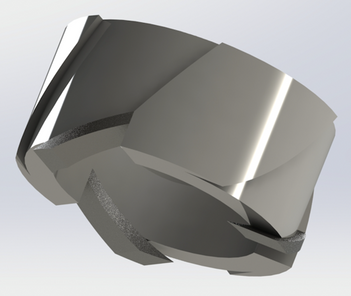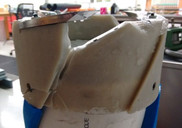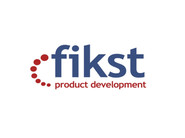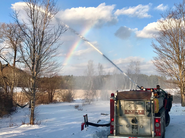HANOVER FIRE
DEPARTMENT
PROJECT
Introduction to Engineering (Engs 21)
Design Lead
SKILLS
Rapid Prototyping
Machine Engineering
SolidWorks FEA & Assembly
Design for Assembly
GD&T
CNC Mill & Lathe

CHALLENGE
Design and prototype a fire hydrant and ice corer for use in frozen ponds for the Hanover Fire Department

OVERVIEW
This project was for an introduction to engineering class which is essentially an introductory design project class. We were tasked with designing and fabricating a reliable and cheap method to extract water from frozen ponds in the winter. In order to complete this project, we used CAD (SolidWorks), FEA, machining, and rapid prototyping. This project was done in close conjunction with the Hanover Fire Department. As the design lead, I prototyped, modeled, and tested our design to create the strong and lightweight design. I also had to learn how to navigate communication barriers when our user, firemen, come from a less-technical background.



MY CONTRIBUTIONS
First Prototype
This project was very challenging as it combined two dissimilar processes. We had to combine an ice corer and an ice strainer to reduce weight and save time for firefighters. We originally modeled our idea after an ice auger however we discovered that this would not be compatible with our device if we were going to suck water through the center. We moved onto a design that combined an ice corer and an ice strainer. Although both devices previously existed, no combination of the two had been outfitted. Once this design was chosen, I created models in SolidWorks to better understand how our device will truly fit together by using DFA concepts.



First Prototype Testing
After creating the SolidWorks model, we created a scaled-down model to test the suction ability of the device. We retrofitted PVC to serve as the hull and suction pipe. For the blade cap, we used FDM 3D printing to create the model. We tested the model by using a small pump that could simulate the forces that occur during the suction process with the fire truck. The suction test with the scale model showed us that we needed 1.5x more holes than we currently had for this scale model. These test were a great lesson for us. We built, tested, and learned. With the information we learned we were able to make an improved final prototype.

Final Prototype
The full scale prototype was created using a 3D printer, CNC mill, and CNC lathe. As the design lead, I had to modify our original prototype using DFA (Design for Assembly) concepts and apply the lessons learned from our first prototype. Tolerances, fits, and time constraints were the biggest issues during construction. The piece had to be made with the tools available to us yet still effective. The fit between the ice strainer and the ice hull were a crucial part in the design as the strainer had to slide with ease through the hull and rest on the blade cap. Also, the blade cap attachment onto the PVC pipe was difficult as the tolerances from the PVC pipe itself had to be taken into account. This experience improved my SolidWorks abilities, experience with machinery, and my understanding of DFA concepts.


Final Prototype Test 1
Once this full-scale prototype was made, we tested our device to confirm that it would first properly drill ice and have the capability to draft water. We performed our first test at our Professor's pond. One of our blades broke off during the drilling process which was concerning for us. We concluded that the angle of our blades were too steep which caused too much stress on the blade cap. With this information, we used FEA to determine that a change from a 35 degree angle to 10 degree angle would reduce the stress the blade cap experienced during drilling.




Final Prototype Test 2
After decreasing the blade angle, the drill cap broke again. However, we expected this to happen because our mold material was not strong enough to handle the stresses of drilling. We knew this going into the test, but we wanted to further explore how this new blade angle affected the design.
The full-scale suction testing gave us great results. We connected our strainer to a firetruck and began drafting. There were slight leakages in the fit between our device and the elbow joint. however, we had great results.
IMPACT & CONCLUSION
Throughout the entire process, the firefighters and their concerns were at the center of our attention. We were constantly interviewing and receiving feedback from Hanover and Lyme firefighters. It was a point of emphasis to have a constant line of communication between us the the fire fighters regarding our design to ensure our prototype was as effective as possible. We had multiple design meetings with the firefighters and they offered us feedback throughout the development of our design. These meetings gave our project great direction; without the interaction with our intended users, we would not have had an effective prototype. This challenging project gave me great appreciation and understanding of the design process.









